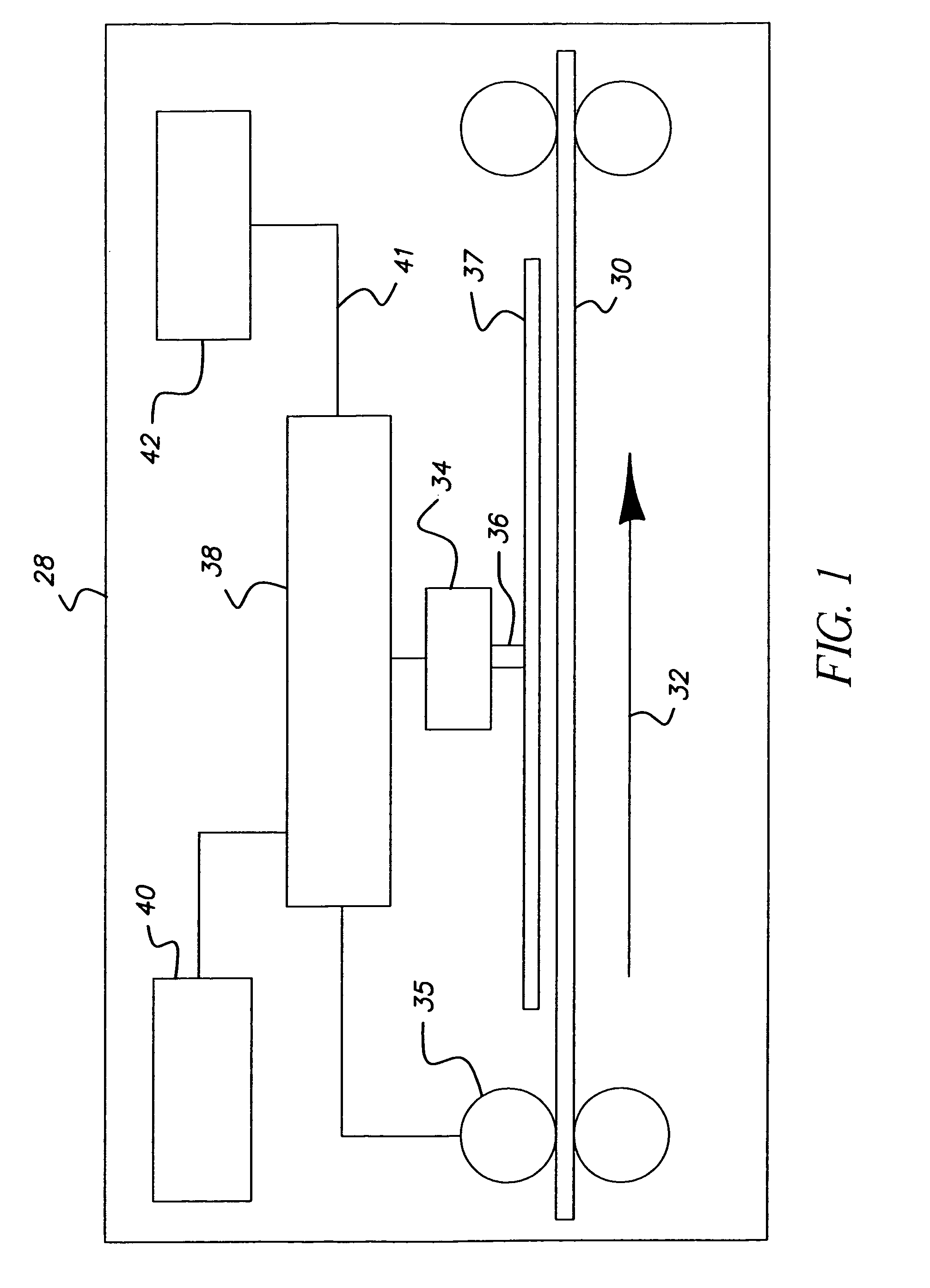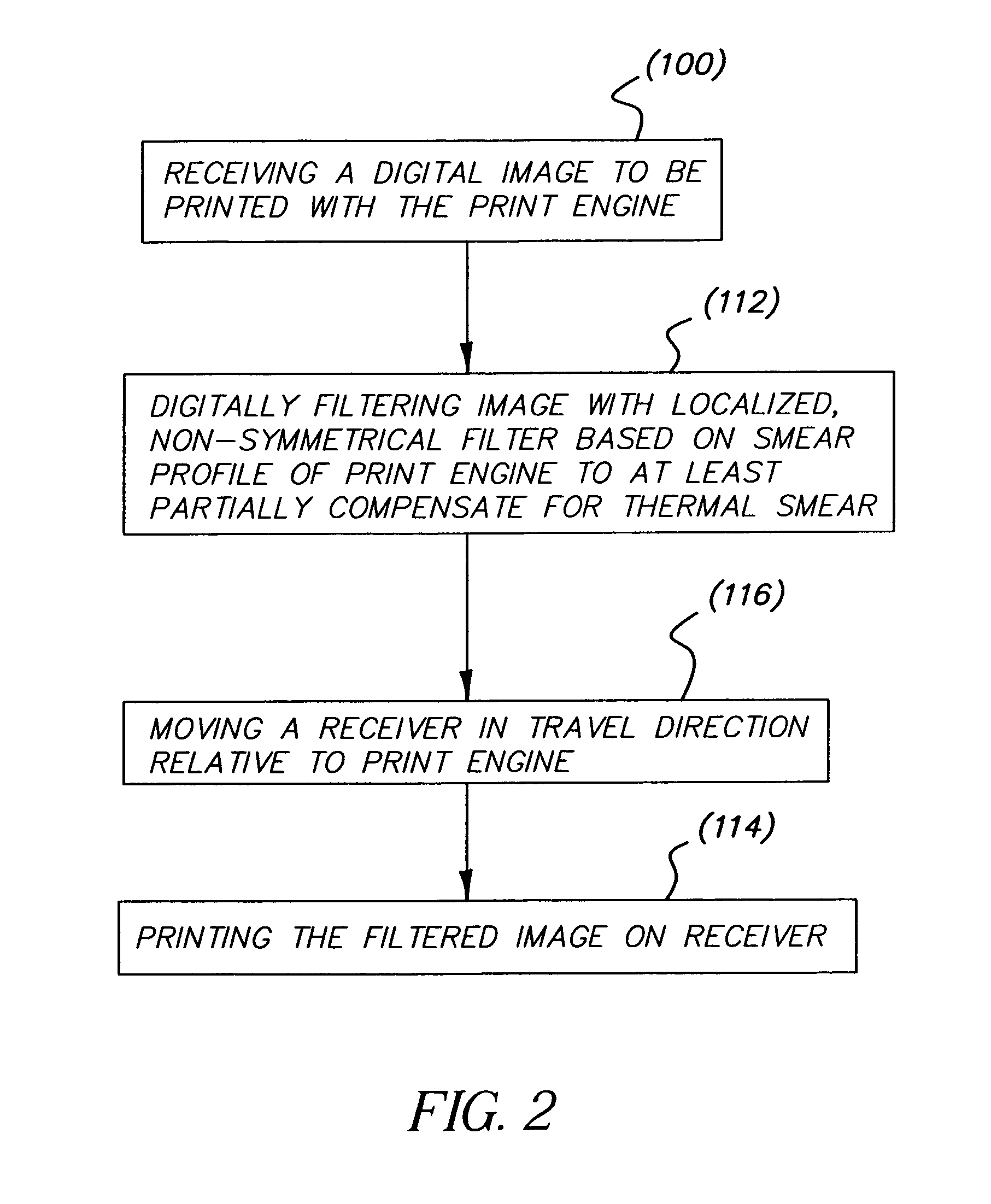Printer having differential filtering smear correction
- Summary
- Abstract
- Description
- Claims
- Application Information
AI Technical Summary
Benefits of technology
Problems solved by technology
Method used
Image
Examples
Embodiment Construction
[0027]In the methods and apparatus herein, smear is reduced by digital filtering that is localized and non-symmetrical. The term “smear” is used herein to refer to erroneous increases or decreases in density or equivalent image unit values of a visible image. Smear can be due to a physical transfer of an image component, such as transfer of ink or the like from an intended image unit of an image to a neighboring image unit as a result of contact during relative movement of an image carrier and an image generator. For example, an offset printing press transfers ink from a plate to a blanket to a receiver. The transfer of a spot of ink may be blurred in the motion direction of the plate to the blanket and of the blanket to the receiver. The blurring of the lead edge of the ink spot on the receiver may be different than the blurring of the trail edge. The method can compensate the image written onto the plate by a platesetter to correct for the smear.
[0028]Smear can also be due to an a...
PUM
 Login to View More
Login to View More Abstract
Description
Claims
Application Information
 Login to View More
Login to View More - R&D
- Intellectual Property
- Life Sciences
- Materials
- Tech Scout
- Unparalleled Data Quality
- Higher Quality Content
- 60% Fewer Hallucinations
Browse by: Latest US Patents, China's latest patents, Technical Efficacy Thesaurus, Application Domain, Technology Topic, Popular Technical Reports.
© 2025 PatSnap. All rights reserved.Legal|Privacy policy|Modern Slavery Act Transparency Statement|Sitemap|About US| Contact US: help@patsnap.com



